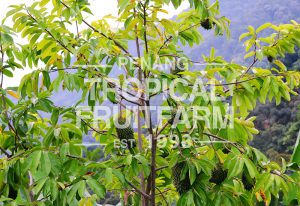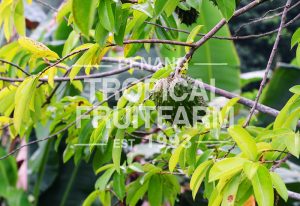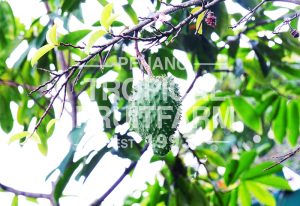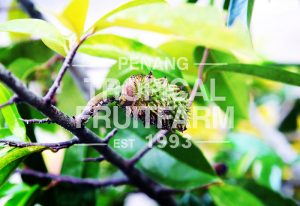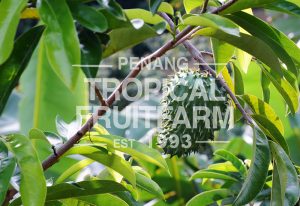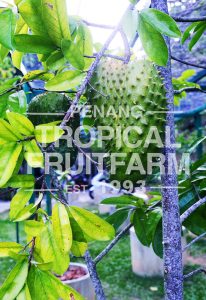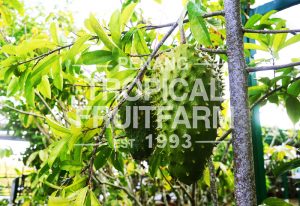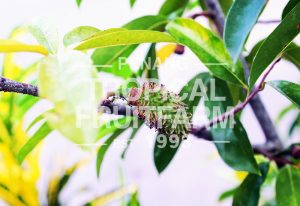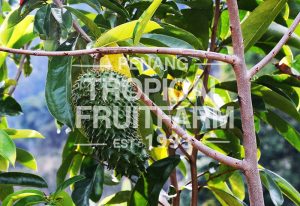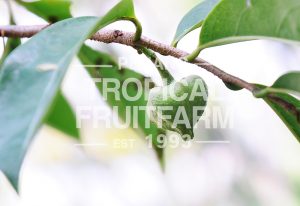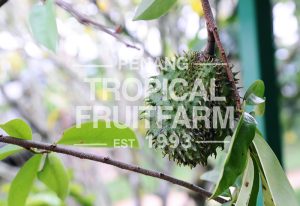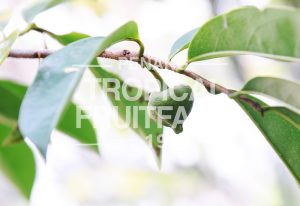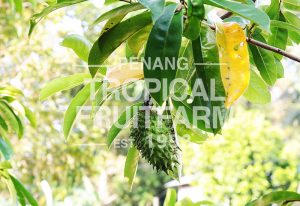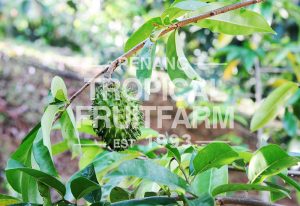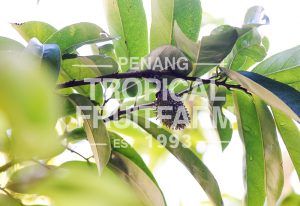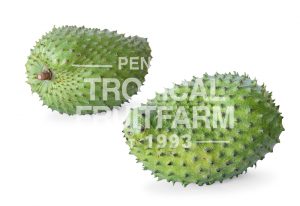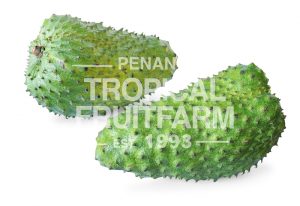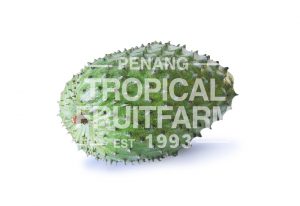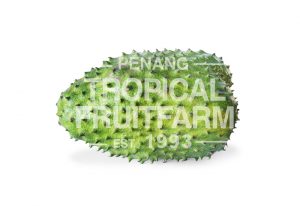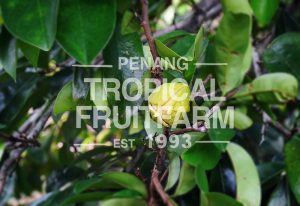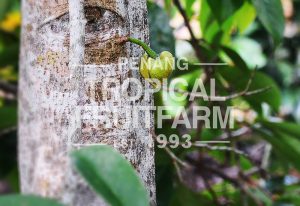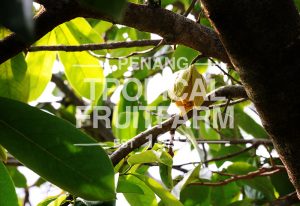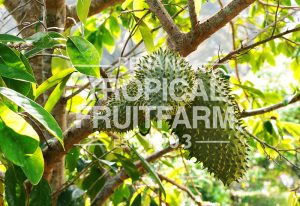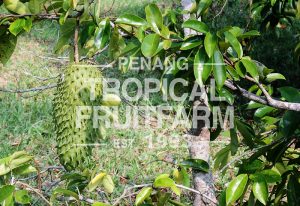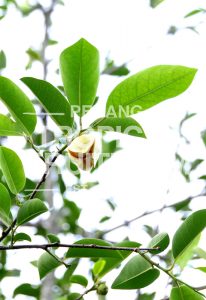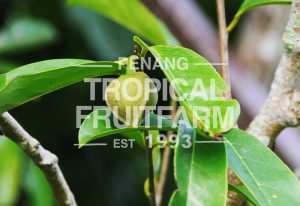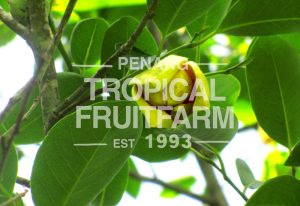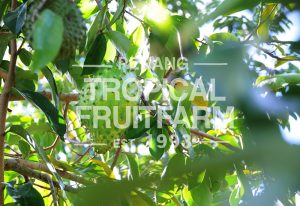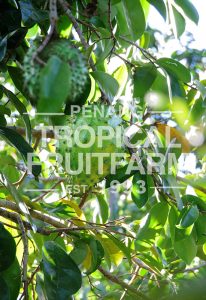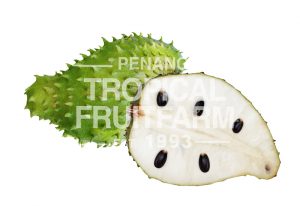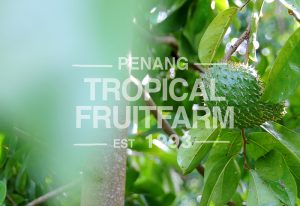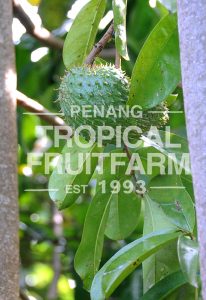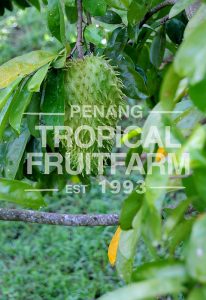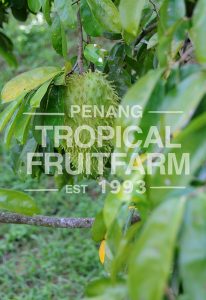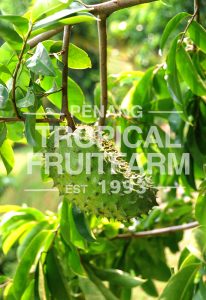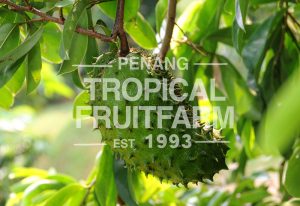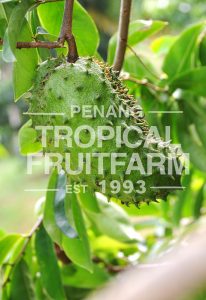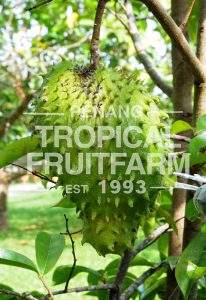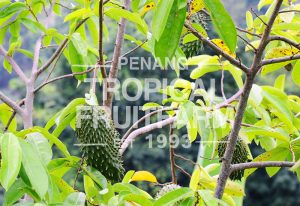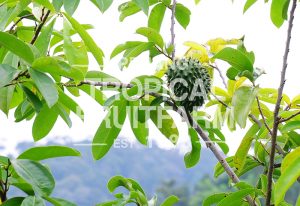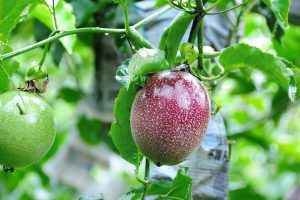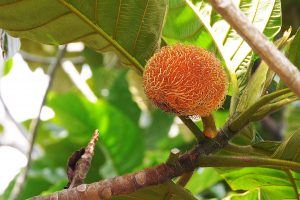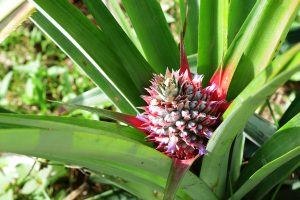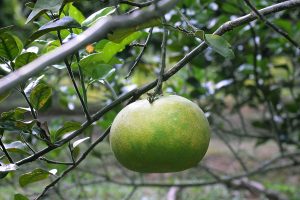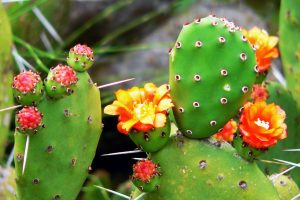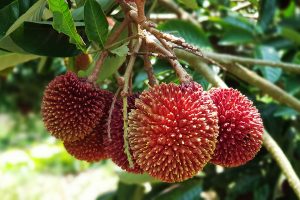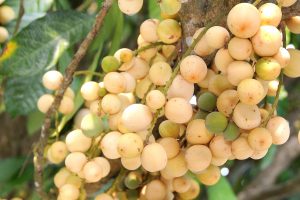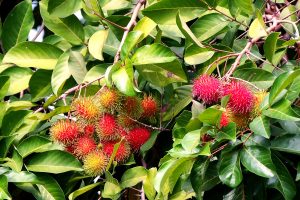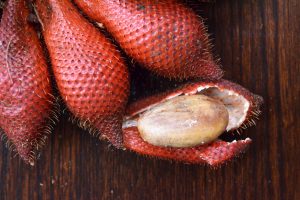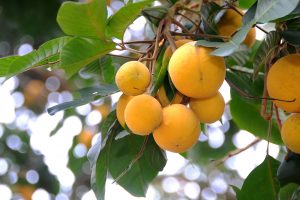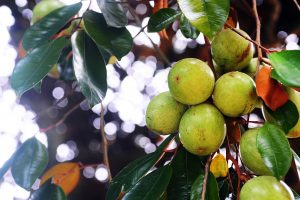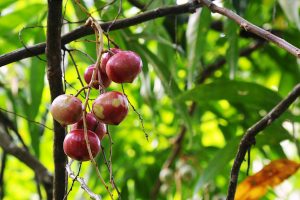| Origin | Native to Central America, the Caribbean and northern South America, Columbia and Brazil, Mexico, Peru, Venezuela |
| Description | Generally a small-medium tree to 8m/25ft. The thin, inedible, leathery green skin cuts easily to yield the large mass of cream colored, fragrant, juicy, and somewhat fibrous, edible flesh, containing 30-200 black-brown seeds, |
| Growth Habitat | Soursop trees require much warmth and humidity, lots of water, and will be killed by temperatures below 32F/0C. In the tropics, soursops are grown from sea level to 1000m, particularly in humid regions where the tree grows particularly well. Soursop's cannot tolerate standing water, and its roots are shallow, so it does not require a very deep soil base. |
| Foliage | The leaves are alternate, oval in shape, pointed at both ends, smooth and shining, 7 to 20 centimeters long and with petioles about 5 millimeters long. |
| Flowers | Large, yellowish or greenish yellow and solitary, heart-shaped, with pointed tip, and up to 5 centimeters in length and 3 centimeters in breadth. There are six large, fleshy or leathery petals in two series. In the center of the flower is a cone-shaped mass of many carpels which will form the fruit, and below this are very numerous stamens. The flowers, which are borne singly, may emerge anywhere on the trunk, branches or twigs. |
| Fruits | More or less oval or heart-shaped. Size ranges from 4 to 12 in (10-30 cm) long and up to 6 in (15 cm) in width, and the weight may be up to 10 or 15 lbs (4.5-6.8 kg). The fruit is compound and covered with a reticulated, but tender, many pliable "spines". Immature fruit is dark-green, becoming slightly yellowish-green before the mature fruit is soft to the touch. In each fertile segment there is a single, black seed, l/2 to 3/4 in (1.25-2 cm) long; and a large fruit may contain up to 200 or more seeds. |
| Harvest | Takes three years for first harvest crop. Flowers year round but peak is April and October Fruits are harvested when fully developed and still green. Considered mature when spines are set far apart and shiny green color turns dull-green or yellowish green. Softens to ripe in 1-3 days. If allowed to soften on the tree, it will fall and crush. Easily bruised and punctured and must be handled with care.. |
| Soil | Best growth is achieved in deep, rich, well-drained, semi-drysoil, but the soursop tree can be and is commonly grown in acid and sandy soil. |
| Pruning | Branch pruning should be done to disperse the remaining branches and to promote air movement and light penetration. Water sprouts, diseased and decaying branches and twigs should be removed also. |
| Fertilization | Apply fertilizers regularly at the onset and end of the rainy season or every 6 months. Fertilizer application can be started a month after planting using ammonium sulfate (21-0-0) at the rate of 100-150 grams per tree. The rate is increased every year until the start of the fruiting stage at which time 250-300 grams of complete fertilizer (14-14-14) is applied. This amount is also increased every year from 1.5 to 3 kg plus 200-300 kg of muriate of potash (0-0-60). |
| Propagation | Soursop is usually grown from seeds. They should be sown in flats or containers and kept moist and shaded. Germination of seeds usually takes three weeks. Soursop seeds can be stored for several months before planting. Seedlings of 6-9 month age are usually large enough to be set out in the field, or used as rootstocks for grafting. Selected types can be reproduced by cuttings or by shield-budding. |
| Nutritional Properties | Soursops are high in vitamins B1,B2, and C. Studies of the ripening process in Hawaii have determined that the optimum stage for eating is 5 to 6 days after harvest, at the peak of ethylene production. |
| Health Benefits | The bark, leaves, roots, stems, fruit and seeds have medicinal value. Used to treat heart disease, asthma, liver problems and arthritis. Also effective against internal parasites and worms, lowers high blood pressure and is used for depression, stress and nervous disorders. Soursop leaves are regarded throughout the West Indies as having sedative or soporific properties but it is now sought after for it’s anti cancer properties. It has 10,000 times more potency of Adriamvcin (commonly used drug in chemotherapy). |
| Commercial Uses | Soursop's are processed into excellent ice creams, sherbets and beverages dessert. Soursop ice cream, (marketed under its Spanish name "Guanabana,") can be found in some gourmet supermarkets. Preserved soursop syrup and canned pulp are used by restaurants in making desert, smoothies or drinks. |
| Food Suggestion | Delicious Smoothie Peel the ripe soursop with your fingers. Cut the fruit in half lengthwise, remove the fibrous core and the seeds. Cut the fruit into cubes. Place the cubed soursop into a blender. Add 1 ½ cups of milk or water. Blend until the soursop is thoroughly incorporated into the liquid. Add sugar as needed Add 1 cup of crushed ice and the juice of a lemon or lime, if you wish. Blend again and serve. |

